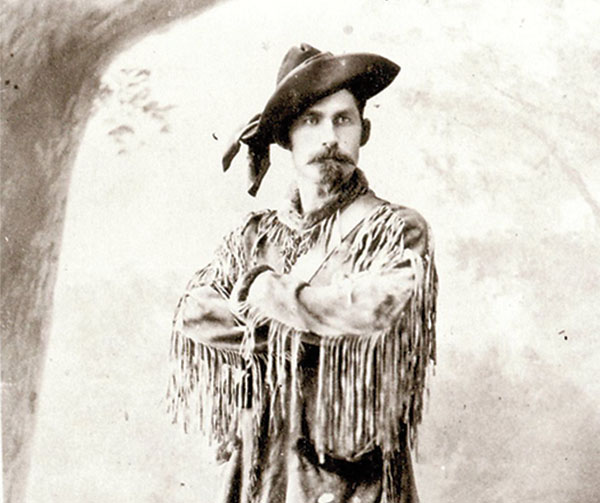TESTS OF SOVEREIGNTY
“The meat of the buffalo tastes the same on both sides of the border.”
—Sitting Bull
The Cypress Hills Massacre and the arrival of Sitting Bull tested Canadian sovereignty in the West. The massacre on June 1, 1873, near Abe Farwell’s trading post, involved a group of American and Canadian hunters and Little Soldier’s band of Assiniboine who were accused of stealing horses. In the ensuing shooting, many defenseless Assiniboine died.
In late August 1873, reports of the incident reached Ottawa. It was considered murder in Canada, motivating the formation of the NWMP and self-defence in the U.S. — a perceptual difference that began a diplomatic confrontation.
The Canadian government requested extradition and the U.S. refused, suggesting Canada could not enforce the law in the Cypress Hills. In December 1874, after the NWMP had arrived, Assistant Commissioner James Macleod was permitted to investigate in Montana. Arrests were made, acquittals granted and the process was repeated in Winnipeg. Neither the Assiniboine nor the Canadian government was satisfied with the outcome. The situation was viewed through anti-American sentiment in the press as an extension of U.S. frontier policy threatening Canadian sovereignty. Canada’s intention was to police criminal activity north of the border not only as a step to encourage settlement, but to suppress a possible U.S. military encroachment and American vigilantism.
Sitting Bull’s defeat of Custer and his eventual arrival in Canada in 1877 added to the international complications. The Canadian West was lightly policed and even more lightly settled. The Americans might intercede if the Sioux united with Canadian tribes to raid against the U.S. with Canada caught in the middle.

There was a precedent for concern.
The Sioux Wars in Minnesota in the 1860s had cost 800 lives and $1.3 million. Red River had been cut off and Little Crow had led Sioux into the Fort Garry area, while Standing Buffalo arrived in Portage la Prairie. The Dominion Police presence was insignificant should violence erupt. By 1877 there were still too few NWMP to close the entire border and cooperating with the U.S. against Sitting Bull would jeopardize Canada’s territorial claims. The U.S. Cavalry wanted revenge and Sitting Bull strategically claimed Canadian citizenship.
Canada believed the situation could be diffused by applying criminal law through the NWMP. The U.S. perceived it as a military problem requiring a scorched earth policy — including eradication of the buffalo. This was a key American-Canadian policy difference.
Canadian law was tested early over stolen horses and by inter-tribal conflicts. As the buffalo were reduced north of the border tensions increased. The very presence of Sitting Bull drew tribes that historically were enemies into a smaller area than normal. A war involving the Blackfoot, Cree, Assiniboine and Sioux would have ignited a serious cross-border conflict. Major Walsh and the vastly outnumbered NWMP under his command continually interceded to demonstrate that the Canadian approach was viable. By 1879, there was about 5,000 Sioux present and they planned to raid across the border once they were better armed. The Americans were well aware that Canadian traders had weapons stolen as the NWMP restricted gunpowder sales to hunting requirements.
Canada hoped the Sioux would return south but after Nez Pierce Chief Joseph’s bloody battle and surrender to the U.S. Cavalry in 1877 it was difficult to convince any Sioux that a return to the U.S. was a practical idea. Nez Pierce chief White Bird’s arrival in Canada added to Sitting Bull’s number of warriors, decreasing the motivation to surrender.

On October 17, 1877, an American delegation led by General Terry met Sitting Bull and 25 chiefs at Fort Walsh to convince him to return south. Those talks failed, but Canada’s position was clarified. The Sioux would always be considered Americans and they would be arrested for crossing the border with firearms. However, if the Sioux obeyed the law they would not be driven out of Canada, but there would be no reservation for them here. From the U.S. perception, if the Canadian government would not turn Sitting Bull over then they were responsible for any violence on the U.S. side of the border.
The Sioux could strengthen for war as long as the buffalo were plentiful in Canada. However, in the spring of 1879, the buffalo had all but failed to return as a result of intense hunting and purposefully set grass fires. Starvation was suddenly looming and the old way of life for the Sioux disappeared, taking with it Sitting Bull’s motivation to fight. He was back in the U.S. in 1881 and killed on December 15, 1890.
A dangerous situation and threat to Confederation had passed. Canada-U.S. tension was reduced and Canadian sovereignty over our West was confirmed. Along the creeks of the Cypress Hills, ranches developed with trailed-in cattle that grazed among the bleached bones of the buffalo. A unique Canadian frontier began to emerge where rapid change was the order of the day.















